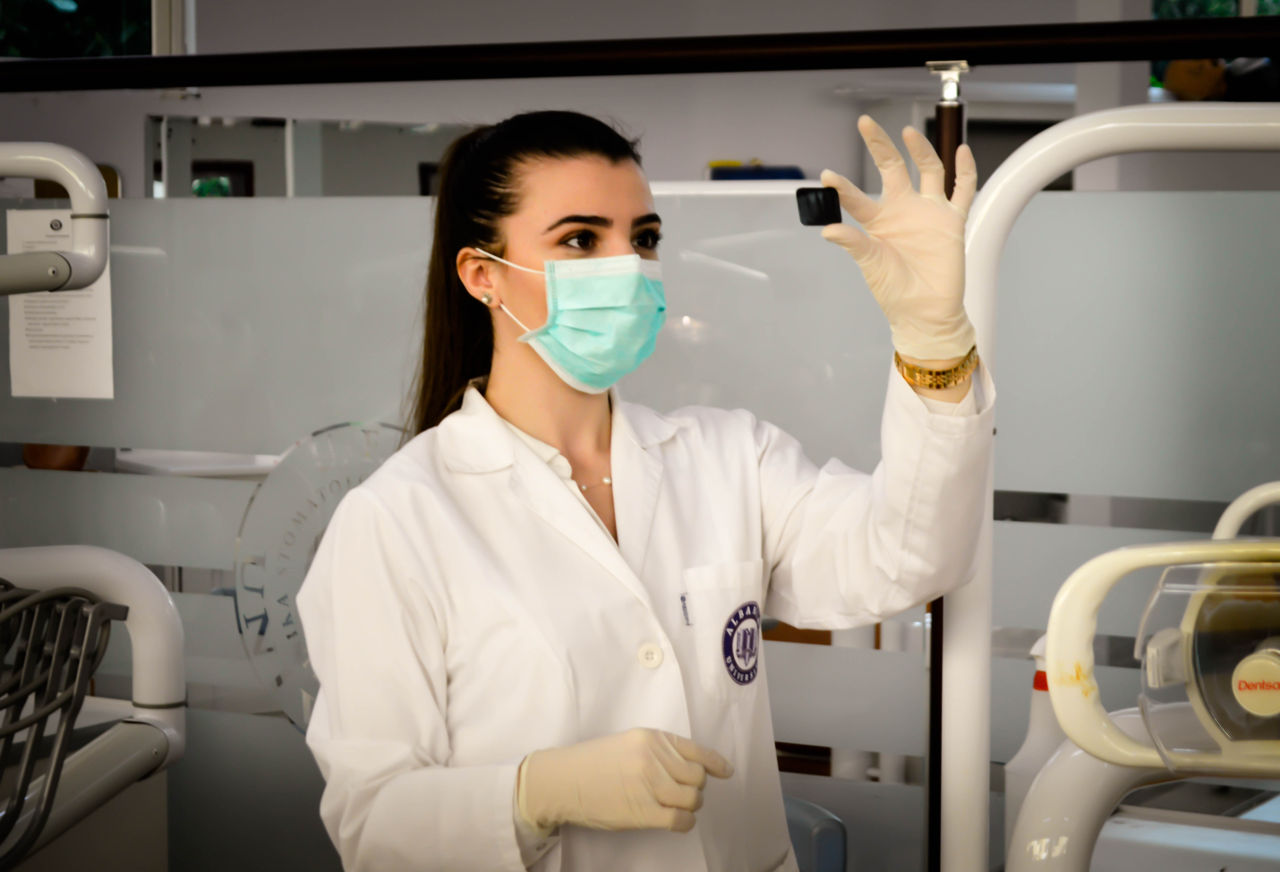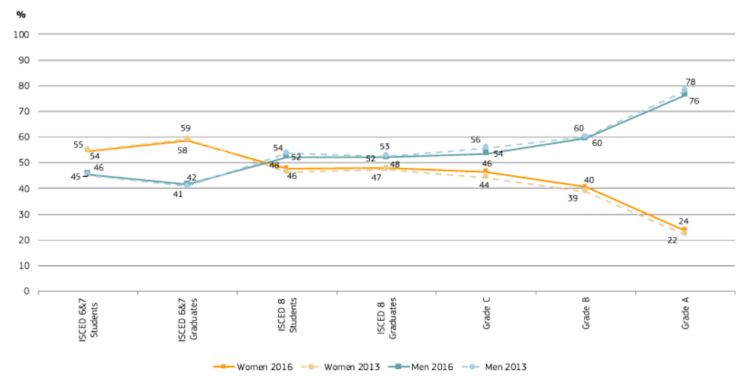Why so few women in French research?
Gender equality in research and innovation is one of the key principles of the European project.
Julie Mendret, University of Montpellier and Martine Lumbreras, University of Lorraine

This is a crucial challenge, because while women initially have more higher education qualifications than men in the 25-34 age group in the European Union, the proportion of male scientists and engineers in the workforce far exceeds the proportion of women.
In many European Union countries, women researchers are genuinely under-represented, with the Netherlands at the bottom of the table (25% in 2016), while Romania sets an example with 46%. France, with 28% female researchers, is below the European average of 33%. In the European Union, as in France, only 20% of corporate researchers are women, with a higher representation in Spain (31%).

She Figures 2018, Author provided
Under these conditions, it is hardly surprising that barely one in seven patents is filed by a woman. Despite the positive upward trend in female inventors' participation in the international patent system compared to their male counterparts, the situation is still far from balanced. The proportion of women using the patent system remains low in relation to the number of scientific articles they publish each year, a phenomenon referred to as the "leaky pipeline". Based on current rates of progress, gender parity in patenting will not be achieved before 2070.
Not enough female science students yet
While girls and boys perform similarly well in science subjects in high school, girls are gradually moving away from science subjects as they progress through their studies. In France, in 2017, 55% of students in higher education were women. In the sixteen years since 2001, their numbers have increased in engineering schools (+4.9 points) and in university health courses (+6.8 points). However, they are still in the minority in the most selective courses (42.8% in the "Classe préparatoire aux grandes écoles") and, above all, in science-based courses (37%). In 2017, 10,600 of the 38,000 engineering graduates were women, or 28%. An increase of 32% in 10 years, but one that remains slow.
Among female science students, the choice of option remains highly gendered: in 2017, 61% were women in life sciences compared with 28% in basic sciences. This gendered specialization in training courses continues in the workplace. In 2015, in the field of mathematics and software design, 14% of corporate researchers were women. In the field of medical sciences, women accounted for 61% of researchers.
Another finding is that after graduating, women's employment conditions are systematically less favorable (employment rate, stability, salary, etc.) than those of men. The glass ceiling is still very present in the European Union, particularly in the academic world. It refers to all the obstacles women encounter in gaining access to senior positions: it's as if an invisible ceiling prevents women from climbing the ladder. In the course of an academic career, for example, inequalities between men and women continue to widen.

She Figures 2018, Author provided
France is not setting an example in Europe
The case of French academia speaks for itself: there are not enough women in French universities (37%), and their progression to the position of professor is low (25% of female university researchers). Although the recruitment of Professors is tending towards feminization, women are less likely to apply for positions. Parity in management bodies has progressed thanks to the legislative and regulatory measures that require it, notably the ESR law of July 22, 2013, which enshrines parity in all governance bodies. Despite this, women are still very much in the minority in the highest positions. Barely 17% of universities were headed by women in 2019.
This trend could be linked to the weight of tradition: women are expected to look after their families and daily lives. As a result, some women are reluctant to set their sights higher, given the amount of work involved. For example, the need to travel both in France and abroad for collaborations or participation in international conferences, in order to raise one's level of research, can pose serious problems if the female researcher does not have "flexible" help with childcare.
Towards a new, freer generation
However, new generations are gradually freeing themselves from this burden. Moreover, those who do overcome this obstacle are achieving very good results, and excellent research in the public sector by women (who account for 39% of researchers in the public sector) is now widely recognized: in recent years, public research bodies have awarded 42% of the highest distinctions to women.
The goal of the French Ministry of Higher Education, Research and Innovation is to have 40% of women in scientific fields by the start of the 2020 academic year. To achieve this, it is relying in particular on initiatives such as those proposed by our Femmes & Sciences association, which aims to encourage young girls to take up scientific and technical careers, and to strengthen the position of women in these professions.
Among the resources deployed is a mentoring program for women scientists, designed to help doctoral students build their careers. The program is based on the formation of pairs: a mentor accompanies a student mentee. Pairs are formed by affinity during a speed-meeting, ensuring that mentor and mentee do not belong to the same entity.
Exchanges can focus on the mentee's career goals, questions, difficulties encountered, or any other topic she wishes to address according to her needs. Our pioneering Montpellier F&S group launched mentoring in 2015, based on a doctoral school (15 pairs).
Since then, the program has expanded, with support from the University of Montpellier, the CNRS and, as of this year, an agricultural engineering school. The range of disciplines is expanding, and so is the number of volunteers (men and women) who want to be mentors. Mentoring has already proved useful in difficult situations (harassment, for example), where the mentor has been able to work with university authorities to ease tensions.
In France, public authorities and industry alike have taken into account the imbalance in the number of women scientists. The gap is gradually closing, but unfortunately very slowly, and we are still lagging behind other European countries. Testimonials in schools, industry days (Girl's Day), competitions and actions such as mentoring are all aimed at closing the gap.![]()
Julie Mendret, Senior Lecturer, HDR, University of Montpellier and Martine Lumbreras, Professor Emeritus, University of Lorraine
This article is republished from The Conversation under a Creative Commons license. Read theoriginal article.